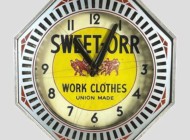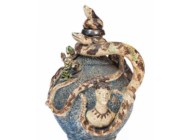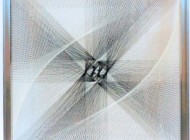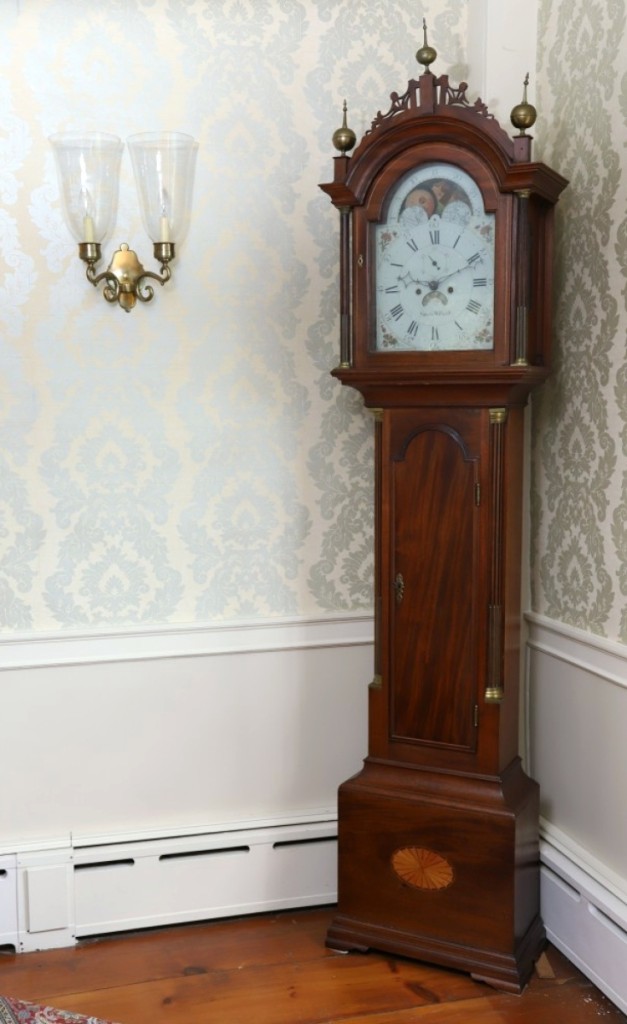
The top lot of the sale was this Simon Willard moon phase calendar tall clock, which was reportedly purchased from Simon Willard himself, by Edward and Abigail Emerson for the Emerson homestead. It went out at $18,000 against an estimate of $10/18,000.
Review and Onsite Photos by Madelia Hickman Ring, Catalog Photos Courtesy John McInnis Auctioneers
EAST BOOTHBAY, MAINE – A two-day Americana auction event featuring the contents of a stately Eighteenth Century colonial home known as the Murray House was conducted July 27-28 by John McInnis Auctioneers, which is based in Amesbury, Mass.
The Saturday, July 27 session had online bidding; the Sunday, July 28 session was an uncataloged and old-fashioned discovery auction, with no internet bidding. In all, more than 700 lots came up for bid over the course of the two days, which saw more than 800 people attend between the two-day preview and two-day sale and more than 700 bidders registering online. By the time the gavel came down on the final lot, the sale totaled more than $400,000, with approximately 60 percent of the sale selling to attendees in the room.
Antiques and The Arts Weekly caught up with John McInnis after the sale, who said, “This was not a big sale for us but a lot of fun – and work – to do. I knew the husband, who passed away from cancer. He had been antiquarian at heart and bought a lot of different things. His wife, who has been at the property during the preview, said to me, ‘Compared to dealing with the sale of the house, this auction has been the highlight of my summer.’ It’s always good to hear that.”
The Murray House had been featured in the June 2016 issue of Early American Life magazine and the sale featured period country and formal furnishings, including Queen Anne, Chippendale, Federal, desks, candlestands, looking glasses, corner cupboards, dining furniture, sideboards, highboys, lowboys, tea tables, colonial objects, folk art, painted objects, early soft paste, a grouping of Asian porcelains, paintings, Oriental rugs, nautical items, clocks and pewter.
The lot with the highest estimate in the sale was also the top lot: a Simon Willard moon phase calendar tall clock that sold for $18,000 against an estimate of $10/18,000. According to family descendants, the clock was purchased from Simon Willard himself by Edward and Abigail Emerson for the Emerson homestead and is listed in an 1803 inventory of their household contents. A large mahogany banjo clock attributed to Simon Willard struck the right note with bidders, who chased it past the high estimate ($2,500) to sell for $3,000. More than tripling expectations when it sold for $7,500 was a Chippendale looking glass mirror by John Eliot, Philadelphia, with a carved and gilt Chinese-inspired eagle ($2/4,000).
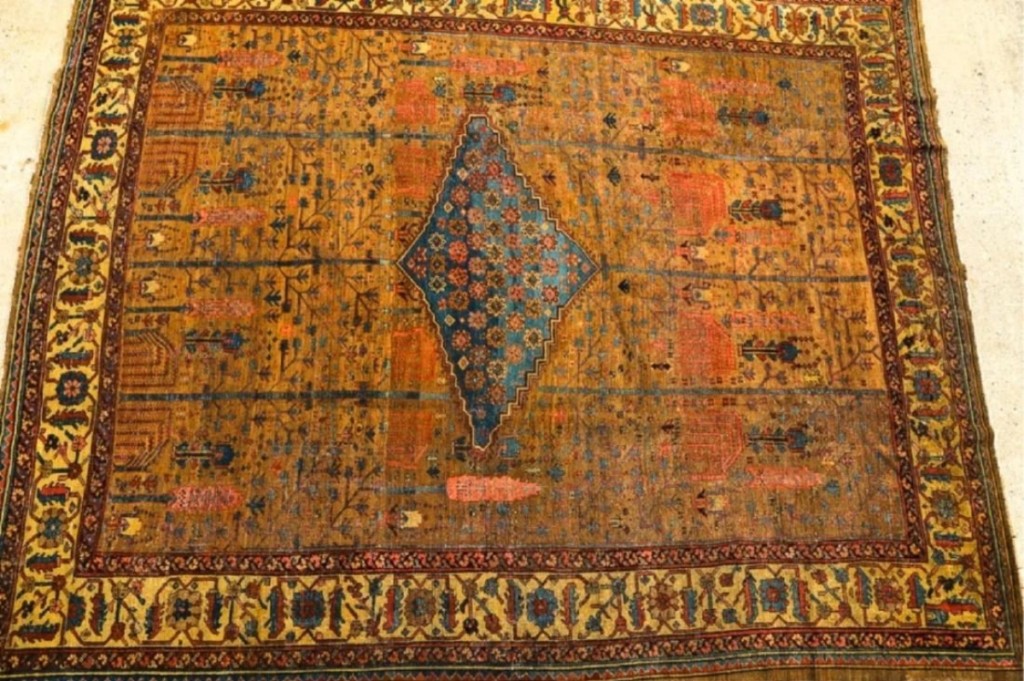
The catalog described this Persian Bakshaish Oriental carpet as “exceptional” and enough bidders recognized its worth. It had one of the higher estimates in the sale ($5/8,000) but sold for $10,800, which was enough for it to get second-place honors.
Additional highlights of Eighteenth Century American furniture were a Boston Chippendale blockfront desk with carved mahogany fully developed two-tier blocked interior that sold for $8,400 ($7/12,000). A Queen Anne mahogany lowboy with an indistinct signature more than tripled expectations and sold for $7,800 ($2/4,000), while a Windsor stretcher base table with the same estimate ($2/4,000) sold nearly as well at $6,600 and a Queen Anne cherry bonnet top highboy, made in the Connecticut Valley with pinwheels, marquetry inlay and cabriole legs, topped out at $4,800 ($4/8,000).
Fine art lots saw mixed interest from buyers. An oil on canvas laid to paper board painting by William Stubbs (1842-1909), titled “Galdem (?) S. Hills Caught in a Gale,” had been estimated at $2/3,000 but did not sell, though a seascape by Anthony Thieme (American, 1888-1954) came in right around the low estimate ($2/4,000), at $2,160. Two landscapes by Alfred Thompson Bricher (American, 1837-1908) were each estimated at $2/4,000 and sold consecutively, for $1,320 and $1,200.
Asian and Chinese export items were also in the sale. Leading the section was a pair of blue and white garden seats that sold for $2,040, a signed Chinese bottle vase in the Imari palette that finished at $1,800 ($3/5,000); a Chinese export porcelain punch bowl with floral decoration that closed at $1,440; and a 25-inch-tall Eighteenth Century carved Chinese and gilt seated Buddha that made $960 ($1/2,000).
Onsite sales that include entire estate contents are fun for the simple reason that they often yield an eclectic variety of items. Lots fitting that description include an iron comb with hollow cut lettering along the handle that reads “G. Washington,” exceeded the high estimate ($1/2,000) to sell for $3,600. Also topping the high estimate was an 11½-inch-tall “Grand Turk” Herculaneum Ware jug that read “Peace, Plenty & Independence” that sold for $3,900 ($1,5/3,000). A pleasant surprise was an Eighteenth Century tricorn hat, made from beaver and with a woven linen interior that more than quadrupled the high mark to sell for $5,400 ($500-$1,000).
All prices quoted include buyer’s premium as reported by the auction house. John McInnis Auctioneers is at 76 Main Street, Amesbury, Mass. For information, 978-388-0400 or www.mcinnisauctions.com.



















